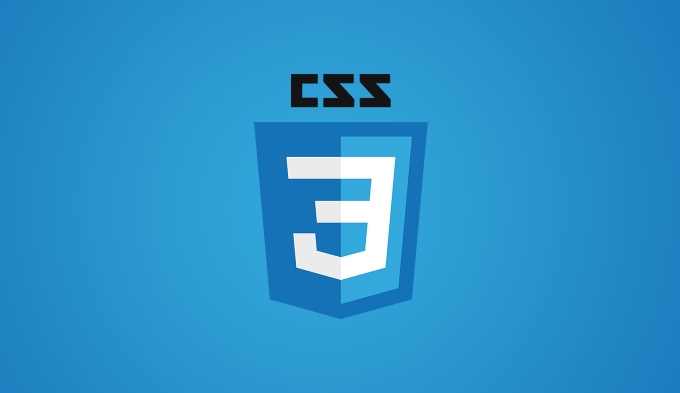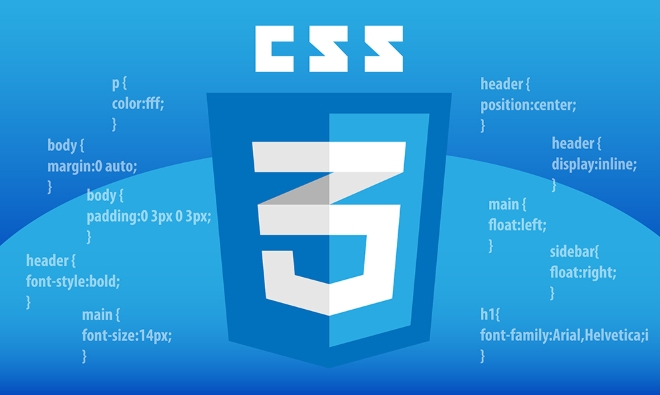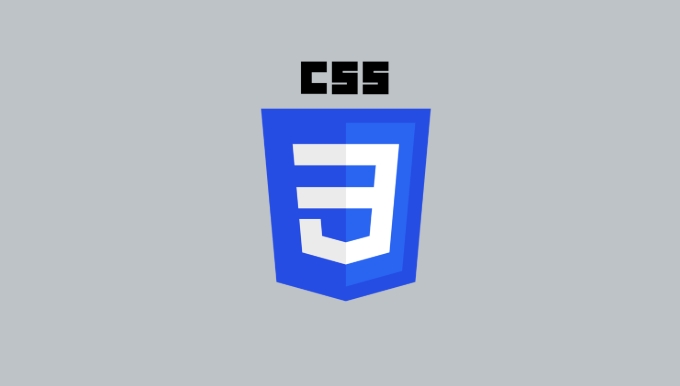CSS-in-JS is a development model for writing CSS styles in JavaScript, with the core of which is to encapsulate styles and component logic. It defines styles through objects or template strings, and dynamically generates style tags to insert pages at runtime, thereby avoiding style conflicts and improving component development efficiency. 1. It makes component development more natural, styles coexist with components, without switching files; 2. Supports dynamic styles, and can adjust styles in real time according to state changes; 3. Automatically add unique class names to effectively avoid style conflicts; 4. Most libraries do not require additional construction configurations and are used out of the box. Mainstream libraries include styled-components, emotion and goober, which are suitable for different project needs. However, when the project is smaller, the team is familiar with traditional CSS, or the performance requirements are extremely high, it may be more suitable for traditional solutions. Whether to adopt CSS-in-JS depends on project structure and team habits.

CSS-in-JS is a development model that directly writes CSS styles into JavaScript files, and is very popular in modern front-end frameworks such as React. Its core philosophy is to encapsulate the style and logic of components together, rather than putting CSS alone in external files like traditionally.

What is CSS-in-JS?
Simply put, CSS-in-JS is to write CSS using JavaScript. It defines the style through a JavaScript object or template string, and then dynamically generates the <style></style> tag at runtime and inserts it into the page.
For example, you may see code like this:
const buttonStyle = {
backgroundColor: '#007bff',
color: 'white',
padding: '10px 20px',
border: 'none',
borderRadius: '4px'
};The advantage of this writing method is that styles can be directly bound to components, avoid style conflicts, and it is easier to implement dynamic styles.

Why would you want to use it?
1. Component development is more natural
In a componentized framework like React, writing styles and components together can better implement encapsulation. You don't need to switch between multiple files, all the component-related content is in one place, making it easier to maintain.
2. Dynamic styles are easier
Traditional CSS is difficult to dynamically modify styles based on state, and CSS-in-JS can be easily implemented. For example, change the button color according to the user's click status:

const getButtonStyle = (isActive) => ({
backgroundColor: isActive? '#ff0000' : '#007bff'
});3. Avoid style conflicts
When using CSS-in-JS, styles are usually automatically added with unique class names, which can avoid the problem of multiple component styles interfering with each other, and are especially suitable for large projects.
4. No additional build steps required
Many CSS-in-JS libraries (such as styled-components, emotion) do not require additional build configuration and are used out of the box and are suitable for rapid development.
What are the common CSS-in-JS libraries?
Currently mainstream libraries include:
- styled-components : The most popular library in the React community, with concise syntax
- emotion : powerful function, supports advanced usage such as server rendering
- goober : a lightweight alternative for performance-sensitive projects
You can choose the right library according to your project requirements. If you are just starting to try it, it is recommended to start with styled-components, which has rich community resources and friendly documentation.
When may CSS-in-JS be not required?
Although CSS-in-JS has many advantages, not all scenarios are suitable for use. for example:
- Small scale and simple structure
- Teams are familiar with traditional CSS or CSS Modules
- Extremely high performance requirements (dynamic insertion style may affect the loading of the first screen)
In this case, traditional CSS writing or CSS Modules may be more suitable.
Basically that's it. CSS-in-JS is a practical solution in modern front-end development, especially suitable for projects with high demand for component development and dynamic styles. Whether to use it depends on your project structure and team habits.
The above is the detailed content of What is CSS-in-JS and why would I use it?. For more information, please follow other related articles on the PHP Chinese website!

Hot AI Tools

Undress AI Tool
Undress images for free

Undresser.AI Undress
AI-powered app for creating realistic nude photos

AI Clothes Remover
Online AI tool for removing clothes from photos.

Clothoff.io
AI clothes remover

Video Face Swap
Swap faces in any video effortlessly with our completely free AI face swap tool!

Hot Article

Hot Tools

Notepad++7.3.1
Easy-to-use and free code editor

SublimeText3 Chinese version
Chinese version, very easy to use

Zend Studio 13.0.1
Powerful PHP integrated development environment

Dreamweaver CS6
Visual web development tools

SublimeText3 Mac version
God-level code editing software (SublimeText3)
 CSS tutorial for creating loading spinners and animations
Jul 07, 2025 am 12:07 AM
CSS tutorial for creating loading spinners and animations
Jul 07, 2025 am 12:07 AM
There are three ways to create a CSS loading rotator: 1. Use the basic rotator of borders to achieve simple animation through HTML and CSS; 2. Use a custom rotator of multiple points to achieve the jump effect through different delay times; 3. Add a rotator in the button and switch classes through JavaScript to display the loading status. Each approach emphasizes the importance of design details such as color, size, accessibility and performance optimization to enhance the user experience.
 Addressing CSS Browser Compatibility issues and prefixes
Jul 07, 2025 am 01:44 AM
Addressing CSS Browser Compatibility issues and prefixes
Jul 07, 2025 am 01:44 AM
To deal with CSS browser compatibility and prefix issues, you need to understand the differences in browser support and use vendor prefixes reasonably. 1. Understand common problems such as Flexbox and Grid support, position:sticky invalid, and animation performance is different; 2. Check CanIuse confirmation feature support status; 3. Correctly use -webkit-, -moz-, -ms-, -o- and other manufacturer prefixes; 4. It is recommended to use Autoprefixer to automatically add prefixes; 5. Install PostCSS and configure browserslist to specify the target browser; 6. Automatically handle compatibility during construction; 7. Modernizr detection features can be used for old projects; 8. No need to pursue consistency of all browsers,
 Creating custom shapes with css clip-path
Jul 09, 2025 am 01:29 AM
Creating custom shapes with css clip-path
Jul 09, 2025 am 01:29 AM
Use the clip-path attribute of CSS to crop elements into custom shapes, such as triangles, circular notches, polygons, etc., without relying on pictures or SVGs. Its advantages include: 1. Supports a variety of basic shapes such as circle, ellipse, polygon, etc.; 2. Responsive adjustment and adaptable to mobile terminals; 3. Easy to animation, and can be combined with hover or JavaScript to achieve dynamic effects; 4. It does not affect the layout flow, and only crops the display area. Common usages are such as circular clip-path:circle (50pxatcenter) and triangle clip-path:polygon (50%0%, 100 0%, 0 0%). Notice
 What is the difference between display: inline, display: block, and display: inline-block?
Jul 11, 2025 am 03:25 AM
What is the difference between display: inline, display: block, and display: inline-block?
Jul 11, 2025 am 03:25 AM
Themaindifferencesbetweendisplay:inline,block,andinline-blockinHTML/CSSarelayoutbehavior,spaceusage,andstylingcontrol.1.Inlineelementsflowwithtext,don’tstartonnewlines,ignorewidth/height,andonlyapplyhorizontalpadding/margins—idealforinlinetextstyling
 Styling visited links differently with CSS
Jul 11, 2025 am 03:26 AM
Styling visited links differently with CSS
Jul 11, 2025 am 03:26 AM
Setting the style of links you have visited can improve the user experience, especially in content-intensive websites to help users navigate better. 1. Use CSS's: visited pseudo-class to define the style of the visited link, such as color changes; 2. Note that the browser only allows modification of some attributes due to privacy restrictions; 3. The color selection should be coordinated with the overall style to avoid abruptness; 4. The mobile terminal may not display this effect, and it is recommended to combine it with other visual prompts such as icon auxiliary logos.
 How to create responsive images using CSS?
Jul 15, 2025 am 01:10 AM
How to create responsive images using CSS?
Jul 15, 2025 am 01:10 AM
To create responsive images using CSS, it can be mainly achieved through the following methods: 1. Use max-width:100% and height:auto to allow the image to adapt to the container width while maintaining the proportion; 2. Use HTML's srcset and sizes attributes to intelligently load the image sources adapted to different screens; 3. Use object-fit and object-position to control image cropping and focus display. Together, these methods ensure that the images are presented clearly and beautifully on different devices.
 What are common CSS browser inconsistencies?
Jul 26, 2025 am 07:04 AM
What are common CSS browser inconsistencies?
Jul 26, 2025 am 07:04 AM
Different browsers have differences in CSS parsing, resulting in inconsistent display effects, mainly including the default style difference, box model calculation method, Flexbox and Grid layout support level, and inconsistent behavior of certain CSS attributes. 1. The default style processing is inconsistent. The solution is to use CSSReset or Normalize.css to unify the initial style; 2. The box model calculation method of the old version of IE is different. It is recommended to use box-sizing:border-box in a unified manner; 3. Flexbox and Grid perform differently in edge cases or in old versions. More tests and use Autoprefixer; 4. Some CSS attribute behaviors are inconsistent. CanIuse must be consulted and downgraded.
 Demystifying CSS Units: px, em, rem, vw, vh comparisons
Jul 08, 2025 am 02:16 AM
Demystifying CSS Units: px, em, rem, vw, vh comparisons
Jul 08, 2025 am 02:16 AM
The choice of CSS units depends on design requirements and responsive requirements. 1.px is used for fixed size, suitable for precise control but lack of elasticity; 2.em is a relative unit, which is easily caused by the influence of the parent element, while rem is more stable based on the root element and is suitable for global scaling; 3.vw/vh is based on the viewport size, suitable for responsive design, but attention should be paid to the performance under extreme screens; 4. When choosing, it should be determined based on whether responsive adjustments, element hierarchy relationships and viewport dependence. Reasonable use can improve layout flexibility and maintenance.






